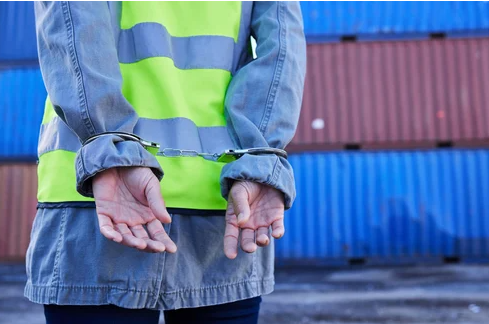By Tom MacCallum & Nick Martin
Cargo theft remains a prominent threat to the transportation industry. In one high-profile case in 2022, three Florida men stole approximately $9 million worth of beef and pork from refrigerated trucks that had left meatpacking plants in the Midwest and Great Plains over the course of a year.
In the second half of 2022, reports of cargo theft and fraud rose 27% year-over-year.[1] Parking lots and truck stops are the most common location for cargo theft incidents but secured yards are not immune from cargo theft.1 Although household goods and food products remain common targets, higher-value goods, such as vehicles, electronics and pharmaceuticals also are frequently targeted.[2]
The four most common cargo theft scenarios include:
- Red zones: Areas with ports and major interstate junctions continue to be hotspots for criminals, including California, Texas, Georgia, Florida and Illinois.1
- Hijacking: Criminals are getting bolder, taking opportunities to steal cargo and even hijacking equipment at truck stops, rest areas and fuel islands when drivers are refueling, using the facilities and while taking an hours of service (HOS) break.
- Inside jobs: An employee with detailed knowledge of the cargo along with the origin and destination points knows when and where a high-value shipment may be vulnerable and have tipped off an outsider on those details in order to facilitate a theft.
- Organized crime: Organized groups of criminals have sophisticated systems in place to accomplish cargo heists, as demonstrated in the beef and pork heists mentioned above.

7 best practices to protect your loads
As cargo theft continues to grow and evolve, companies can implement defensive measures to mitigate losses, including the following:
- Use GPS tracking for power units and trailers. Portable tracking devices can help locate a stolen vehicle or missing trailer. However, this is not an all-encompassing solution, as they can be disabled in various ways or the signal can be blocked
- Implement cargo tracking. Dedicated cargo trackers can be included with load contents, offering a chance to track stolen products wherever they go. Shipments of high-value apparel or pharmaceutical items, for example, may use these, which are more reliable than their GPS cousins because they use cell phone technology. They are also more costly. Costs can be minimized by adding trackers to a select number of products (not all of them), as criminals typically steal in batches. Use enough trackers in products that at least one tracker will likely be taken in a batch of stolen product.
- Put experienced drivers on your higher-value loads. Use trusted drivers, those who have hauled a variety of loads including high value loads, and those who understand the procedures taken to keep their cargo, equipment and most importantly, themselves away from harm. Work as a team with the driver prior to loading, reminding them of the extra procedures that should be taken on these types of loads.
- Plan your routes. Remind drivers to avoid red zones and high crime-rate areas, particularly when stopping or parking. Drivers should have a minimum of 200 miles worth of fuel and enough hours of service to travel that distance before picking up a load. This can help to reduce stops and thieves may become disenchanted with the cargo as it gets past their target zone.
- Train your drivers. Ensure drivers know that trucks and trailers should be locked and sealed, and that they should identify safe, well-lit parking areas before leaving the vehicle. Additional measures include positioning the trailer to a structure to prevent the doors from being opened. Watch for vehicles following the truck and do not discuss the cargo with others either — on the phone or over the CB radio.
- Employ good hiring practices and leverage background checks. Good hiring practices should extend to dispatchers, loads planners, warehouse and dock workers, not just drivers. Note that warehouse workers do not need to know the routes drivers take to reach their destination, which can further protect a load from potential theft.
- Purchase adequate cargo coverage. Companies should determine if they have the proper amount of cargo insurance, especially as the cost of goods rise. Work with your insurance agent to remedy gaps, and consider using a cargo rider for specific, high-value loads. Adjust your coverage as business scales up or winds down, or your product mix changes.
Only a small percentage of cargo thieves are caught and prosecuted. And only a small percentage of stolen cargo is ever recovered. Many law enforcement teams do not have the manpower to devote to these types of cases over higher-profile crimes. Taking steps to make loads less attractive and more difficult to steal, can help to reduce cargo theft.
For more information on defending against the threat of cargo theft, contact IAT.
ASK AN LCR
Have a question on how to mitigate risk? Email losscontroldirect@iatinsurance.com for a chance to see your question answered in a future blog.
Email IAT Loss Control
[1] Verisk “Winter Holiday Cargo Theft Trends and Security Best Practices 2022,” December 16, 2022.
[2] Business Insurance “Cargo losses escalate as thieves target cars, electronics,” May 31, 2022.

